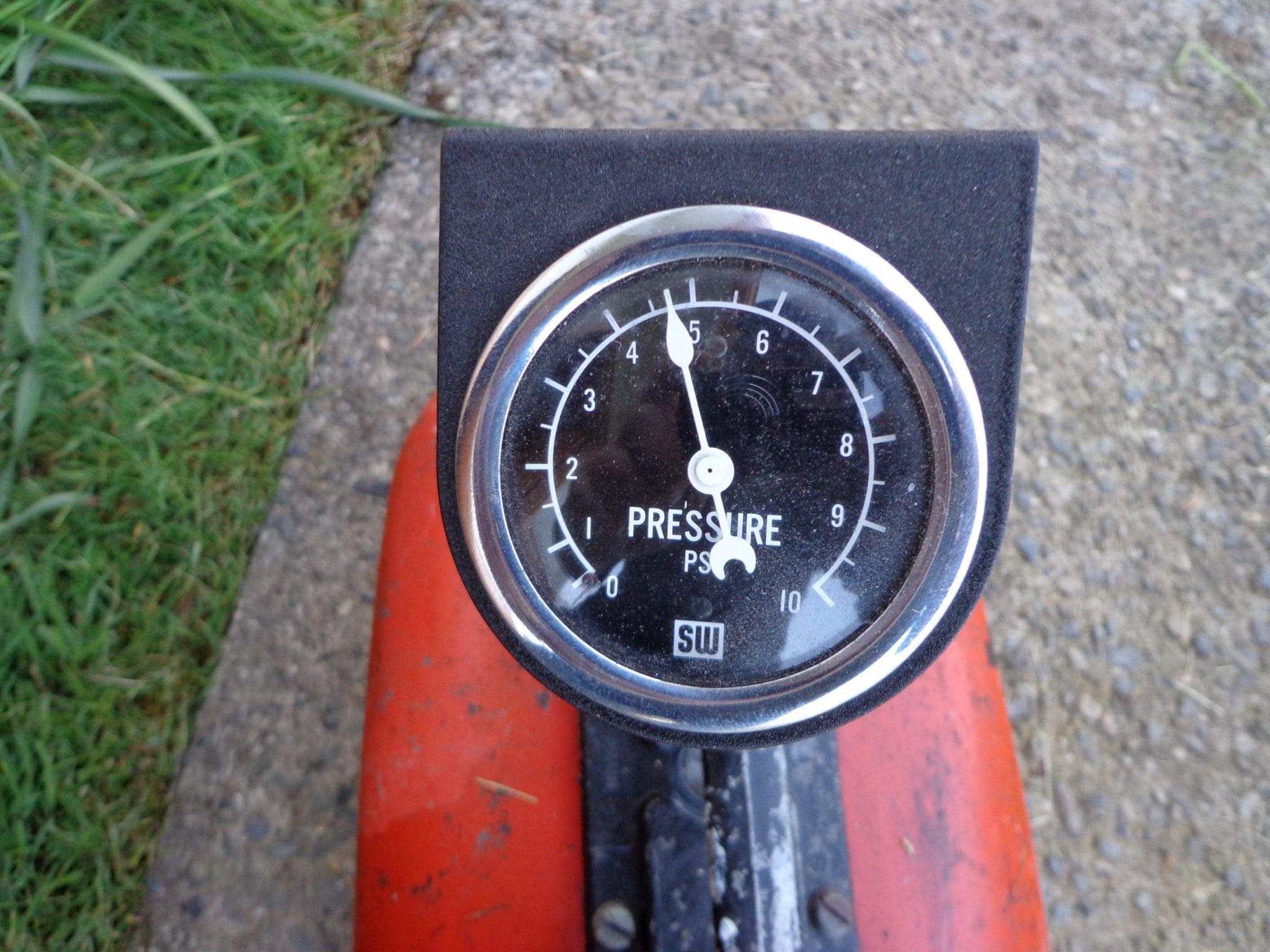Home › Forum › Ask A Member › tank vent question on 50's era dual line tank
- This topic has 15 replies, 9 voices, and was last updated 6 years, 2 months ago by
 outboardnut.
outboardnut.
-
AuthorPosts
-
November 26, 2018 at 11:01 am #155760
When running a 1950/51 QD 11 it starts leaking fuel out the main jet. My initial thought was the float was not working properly, After checking it, the cork seems fine and the needle and seat don’t appear bad. I took the tan apart to check the pressure relief and found it to look clean, Tried a homemade test with a pressure gauge to see where the relief was opening. The service manual calls for 2 to 5 lbs pressure in the tank. mine went over 10 (end of range of gauge) and I never saw any regulation of pressure. The pressure even causes the tank to make sounds as it distort from the pressure. Has anyone had experience with these pressure relief valves, and is there a better way to check them for proper operation? The two hose tank that came with this motor is from a later motor, but I’m thinking they should all function the same.
Am I missing something here?
Rick-
This topic was modified 6 years, 2 months ago by
 Mumbles.
Mumbles.
November 26, 2018 at 11:06 am #155762THe above title should obviously read Dual LINE tank. I don’t know how to edit my constant typing errors.
November 26, 2018 at 12:39 pm #157133not much is describded about the relief valve and OVER PRESSURE in the boatinfo Johnson red book so why not just take it apart clean it and re-install it
retest
Joining AOMCI has priviledges 🙂
November 26, 2018 at 12:53 pm #157140Well, I did that and tried it with my testing set up, same situation, tank pressure goes too high and tank side want to bulge. I’d run it on the motor again, but at this time it seems like a waste of effort since I can’t get the relief to make the pressure stop increasing past the stated 2 to 8 lbs from the service manual.
November 26, 2018 at 2:32 pm #157157I think the relief valve is working. I tried hooking the pressure gauge differently and it looks like it opens at 6 1/2 lbs instead of the factory spec of 2 to 5, Don’t know if that’s enough of a difference to cause my flooding. Going back to check the float again. I might have to find a softer relief spring if all else fails!
November 26, 2018 at 4:07 pm #157169Don’t worry, I can edit that for ya. 😊
Don’t quote me but I think I read somewhere that the tanks can only build up to 11 or 13 PSI max before the safety valve on them opens. The length of the hose might also play a role to in how much pressure builds up in the tank. For example, if the hose was really short, like 6″, it might build up to the tanks release pressure. Myself, I use 12′ of hose and the tanks normally run around 4 – 5 PSI. This number would probably be higher if the tank is sitting under the hot sun instead of being in the shade.
November 26, 2018 at 4:36 pm #157178Rick, I fail to understand what service manual says the relief should open a 2-5 psi, The normal operating pressure is around 4-5 psi, so it wouldn’t be able to come up to normal if the relief was opening at less than 5.
Let’s back off and reconsider. Under normal operation, the relief valve will never open. The pressure in the tank builds to the maximum crankcase pressure pulses in the motor, normally around 4-5 psi. So it is the motor that controls the maximum tank pressure under normal conditions.
The other factor to consider is heat, like from sitting out in the hot sun. That can cause a significant pressure increase. and that is what the relief valve is for. It will open and bleed off excess pressure before the tank blows up. I would have to do some research to find out what the relief valve setting is, but it certainly is higher than what the motor normally pumps in. I’m guessing around 8-10 psi, but that is a guess. I’ll see if I can find the real number.
November 26, 2018 at 4:56 pm #157181Found it: Normal operating pressure is 2-5 psi. Safety relief valve opens if pressure exceeds approximately 8psi. and reseats when pressure drops below that.
Johnson Service manual, 10th edition.
November 26, 2018 at 5:13 pm #157182Thanks for all that good information, Frank.
In regards to the length of hose having an effect on tank pressure, I’m not so sure. In a closed system, pressure is equal everywhere within that system. It seems that once the motor has pressurized the system (tank/hose/connector) then the pressure will be similar regardless of the volume. Think about pressurizing a four gallon vs six gallon tank for example.
November 26, 2018 at 7:03 pm #157194Good explanation of Pascal’s Law regarding pressure!
Dave -
This topic was modified 6 years, 2 months ago by
-
AuthorPosts
- You must be logged in to reply to this topic.


